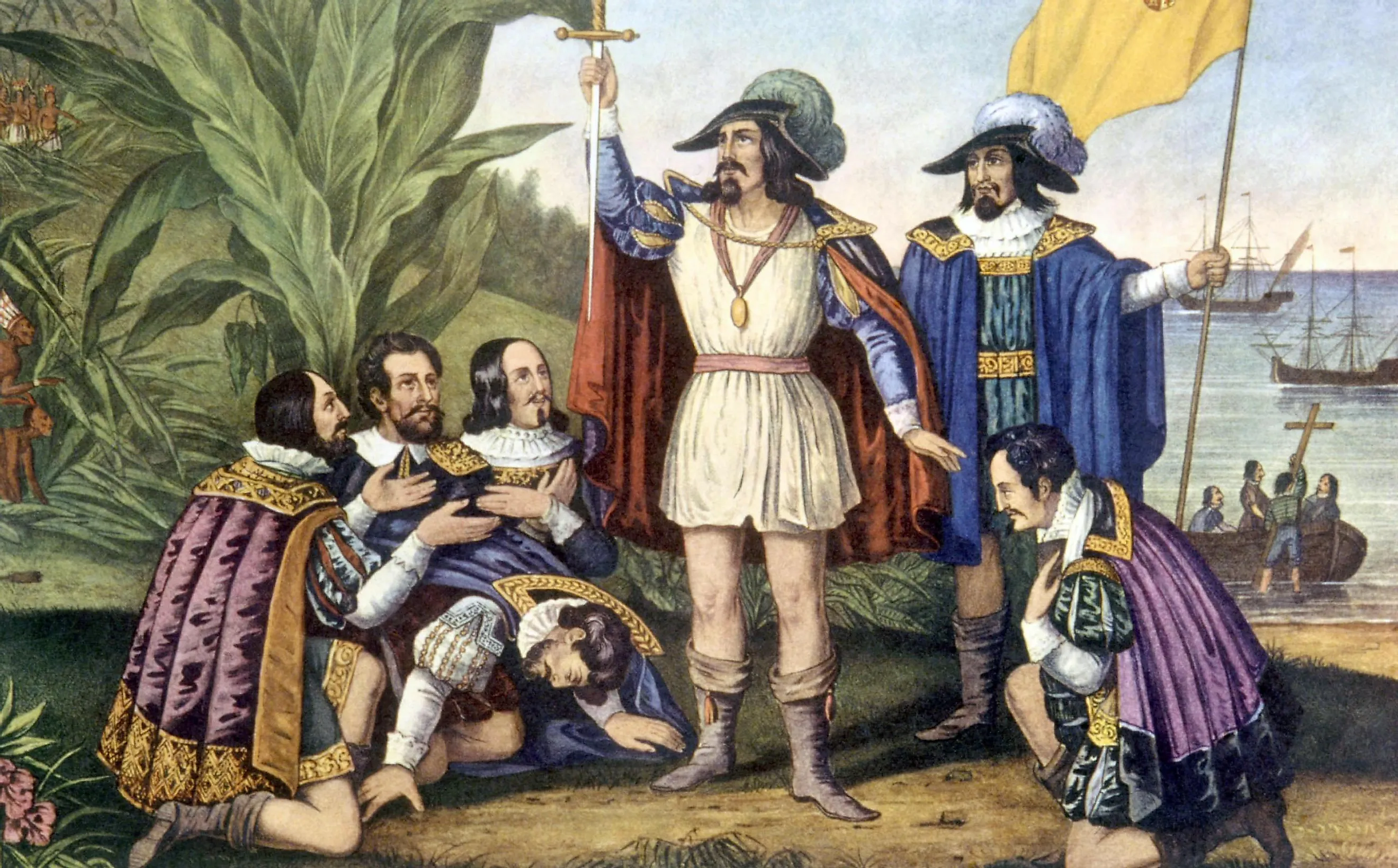
The Former Spanish Colonies
Spain's colonial empire was one of the largest in the world. But, like many former empires, it was founded on the exploration and exploitation of new lands and resources and grew rapidly in size and power. The Spanish empire controlled colonies in North America, South America, Africa, and Asia, making it one of the most diverse and far-reaching empires in history. Indeed, at the height of the Spanish Empires' power, it controlled 35 colonies that spanned every continent on earth except Australia and Antarctica. However, over time the Spanish empire began to decline. Many of its colonies became independent countries, and others were lost to other European powers. Today, Spain's colonial legacy is still evident in the culture and architecture of many former colonies and their relationship continues to be fraught with tension.
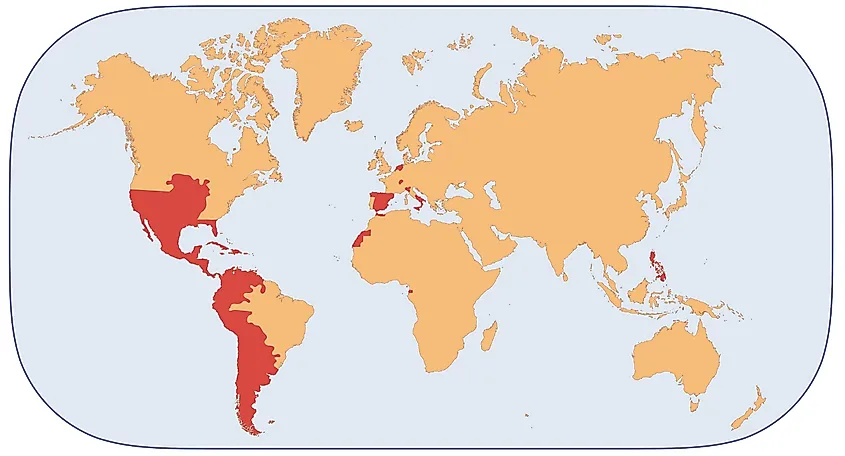
The Colonization of the West Indies (The Caribbean Islands)
Isabela was the first colony in the New World founded by the Spanish Empire. It was located on the island of Hispaniola (the island that makes up modern-day Haiti and the Dominican Republic). It was named after Queen Isabella I of Castile, who sponsored Christopher Columbus' expedition to the West Indies. The city was founded in the year 1493 by Columbus and his men.

It was during Christopher Columbus' second journey to the Caribbean Ocean that he decided to establish a colony on Hispaniola. He had been impressed by the island's natural resources and strategic location. The colony would serve as a base from which the Spanish could explore and conquer the rest of the Americas.
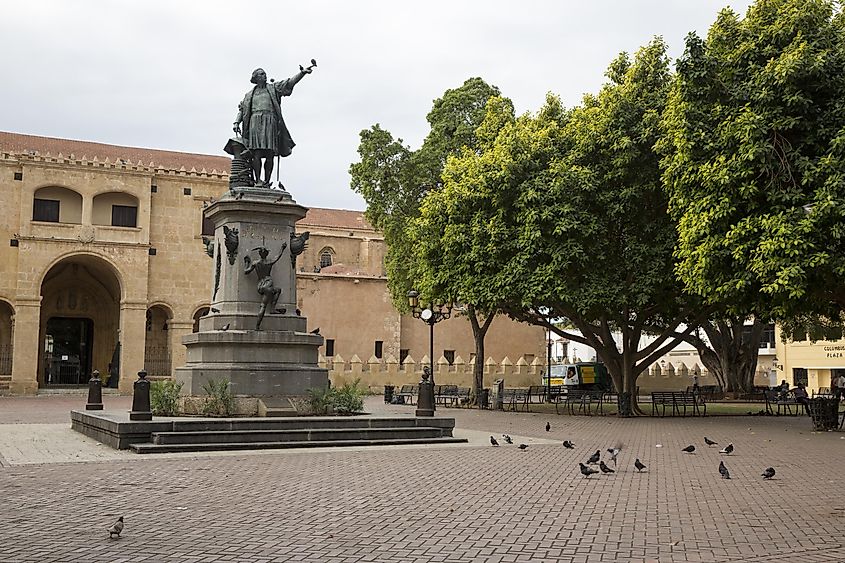
The colony of Isabela was not a success. It was plagued by disease, hunger, and conflict with the Native Americans. The fate of Isabella was sealed. It was abandoned and soon forgotten. In 1496, Bartholomew Columbus, who was Christopher Columbus' younger brother, founded a second colony called Santo Domingo, which would become the capital of the modern-day Dominican Republic.
The Colonization Of Florida
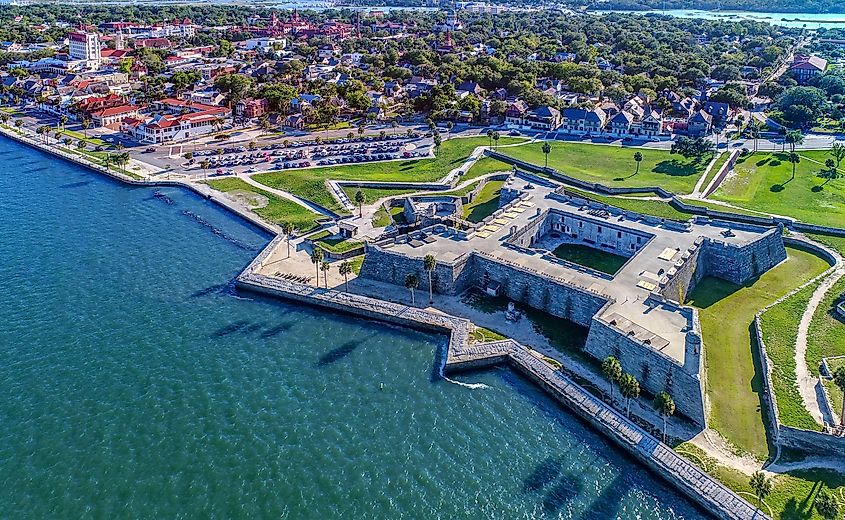
Before the Pilgrims founded the Plymouth colony in Massachusetts, the Spanish Empire had established settlements in Florida. The first recorded European contact with what is now Florida was made in 1513 by Spanish explorer Juan Ponce de León, who sailed westward from Puerto Rico searching for French settlements. The Spanish were concerned that the French were setting up colonies of their own on Florida, a Spanish territory at that time. The Spanish soon began colonizing Florida, establishing the first permanent European settlement in 1565 at St. Augustine. Florida attracted many Spanish settlers because of its warm climate and its proximity to Spain's other colonies in the Americas. Over the next century, the Spanish established several small settlements along Florida's Gulf Coast and built forts and trading posts throughout the state's interior.
The Colonization Of Africa
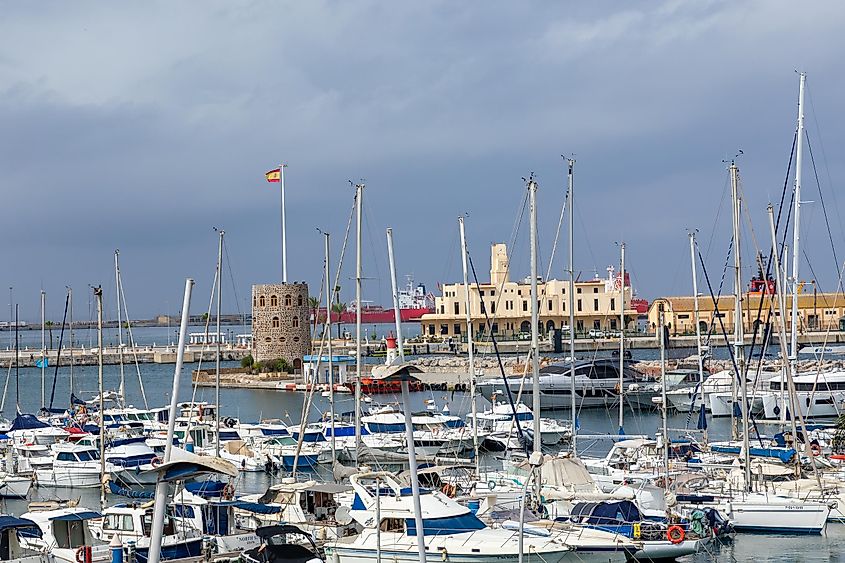
Often when we think about Spanish colonialism, we think of South America, but did you know that the Spanish also had colonies in Africa? In fact, Spanish Africa has a long and varied history. An early Spanish enclave in Africa was Melilla and Ceuta, located in modern-day Morocco. Melilla came under Spanish rule in 1497, and while Portugal captured Ceuta in 1415, it wouldn't pass into Spanish possession until 1668 with a treaty between Portugal and Spain. Spain had its proverbial eye on Africa as early as 1400 when it invaded the Canary Islands in 1402 and finally brought it into the Spanish Empire nearly 100 years later in 1496. These islands then became a Spanish possession and worked as an important location to springboard Spanish expansion into Africa.
While most of Africa is free from Spanish rule, today, several cities or territories have a special arrangement with Spain. These are known as the Spanish Cities or the Plazas de soberanía. The best example is Ceuta which, as we mentioned before, has been under Spanish control since 1668. Another example is Melilla which is located on the north coast of Africa in modern-day Morocco. This small city has been disputed between Spain and Morocco for centuries but is currently administered by Spain. So, while the Spanish empire in Africa is not as extensive as it once was, several cities remain under Spanish rule.
The Colonization Of Asia
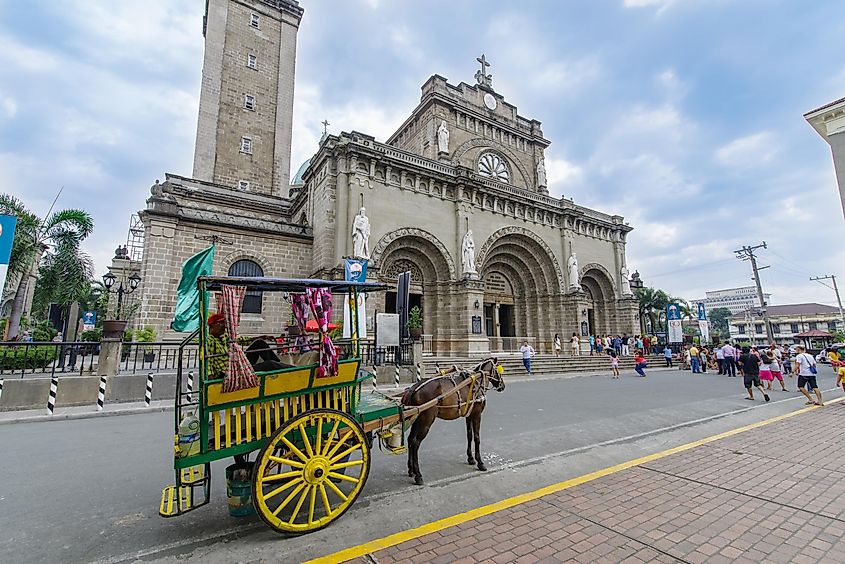
It wasn't until 1521 that the Spanish began exploring and settling in the continent of Asia. Ferdinand Magellan, a Portuguese explorer in the service of Spain, was the first to circumnavigate the globe and reach Asia by sailing westward from Europe. In 1565, Miguel Lopez de Legazpi established the first permanent Spanish settlement in Asia when he arrived in Cebu. Soon afterward, Manila, another colony, was founded in 1571 and became the capital of the Spanish East Indies. The Spanish colonial period in Asia lasted until 1898, when Spain lost the Spanish-American War to the United States and was forced to cede ownership of its colonies, including those in Asia.
The Colonization Of Europe
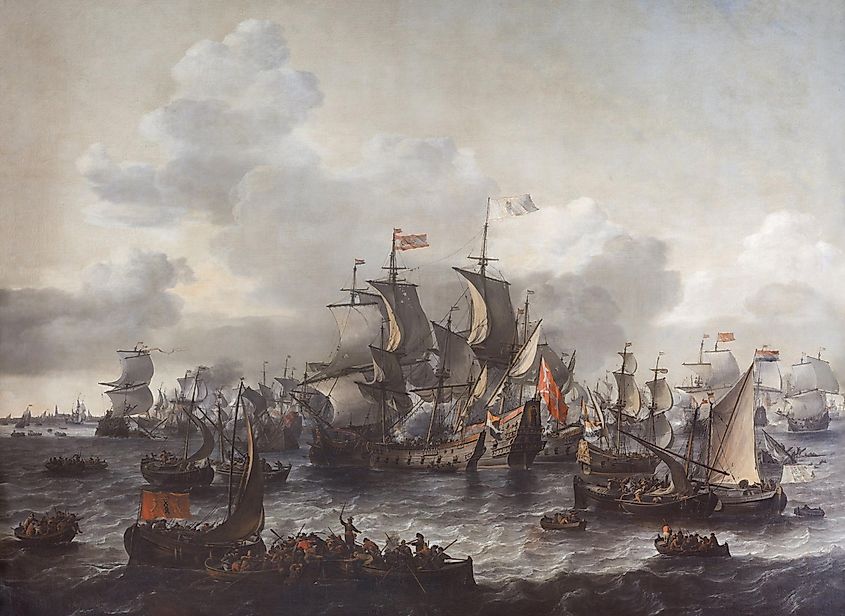
The Spanish Empire included New World colonies but didn't stop there. The Spanish throne also ruled over many cities and even regions in Europe. This included the Netherlands. The Spanish had a significant influence on the culture, art, and politics of the Netherlands. They ruled for many years until, eventually, the Dutch people fought for and won their independence. Although they are no longer under Spanish rule, the effects of Spanish colonization are still present in the Netherlands today. Spain's occupation of Italy began in the late 15th century during the Italian Wars. The wars were a series of conflicts between the major European powers over control of the Italian peninsula. Spain emerged as a major power in the wars, gaining control over large portions of Italy, including Naples, Sicily, and Milan. Today, Spain is no longer an occupying force in Italy, but the two countries remain close allies.
Thus, Spain established colonies all over the world, seeking to expand its empire and gain new wealth. The Spanish colonies were home to a variety of cultures and peoples who experienced different levels of Spanish colonial rule. In some cases, the Spanish colonists treated the native people harshly, while in other cases, they attempted to integrate them into Spanish society. Ultimately, Spanish colonialism left a lasting legacy on the world stage. And for better or worse, its impact is still felt to this day.
| Rank | Former Spanish Colonies | Year Independence from Spain |
|---|---|---|
| 1 | Argentina | 1818 |
| 2 | Belgium | 1714 (remained part of the Netherlands until 1831) |
| 3 | Belize | 1981 |
| 4 | Bolivia | 1809 |
| 5 | California (United States) | 1846 (Became a US territory, then a state in 1850) |
| 6 | Chile | 1826 |
| 7 | Colombia | 1810 |
| 8 | Costa Rica | 1821 |
| 9 | Cuba | 1895 |
| 10 | Dominican Republic | 1795 (Subsequently ruled by France and Haiti until 1865) |
| 11 | Ecuador | 1820 |
| 12 | El Salvador | 1821 |
| 13 | Equatorial Guinea | 1968 |
| 14 | Florida (United States) | 1821 (Became a US territory, then a state in 1845) |
| 15 | Guam (unincorporated territory of the United States) | 1898 (Now an unincorporated US territory) |
| 16 | Guatemala | 1821 |
| 17 | Haiti | 1804 |
| 18 | Honduras | 1838 |
| 19 | Italy | 1714 |
| 20 | Jamaica | 1707 (Became a British colony until 1962) |
| 21 | Louisiana (United States) | 1800 (Returned to France, sold to the US in 1803, statehood in 1912) |
| 22 | Luxembourg | 1714 |
| 23 | Mexico | 1821 |
| 24 | Morocco | 1956 |
| 25 | Nicaragua | 1821 |
| 26 | Panama | 1810 (separated from Colombia in 1903) |
| 27 | Paraguay | 1811 |
| 28 | Peru | 1824 |
| 29 | Portugal | 1640 |
| 30 | Puerto Rico (unincorporated territory of the United States) | 1898 |
| 31 | The Netherlands | 1714 |
| 32 | The Philippines | 1898 (Became a US territory until 1946) |
| 33 | Trinidad and Tobago | 1962 |
| 34 | Uruguay | 1825 |
| 35 | Venezuela | 1823 |











